
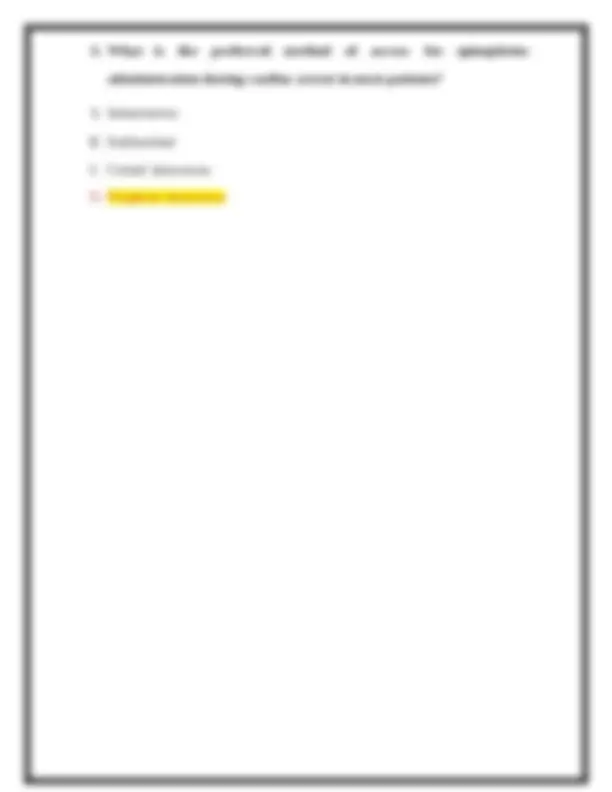
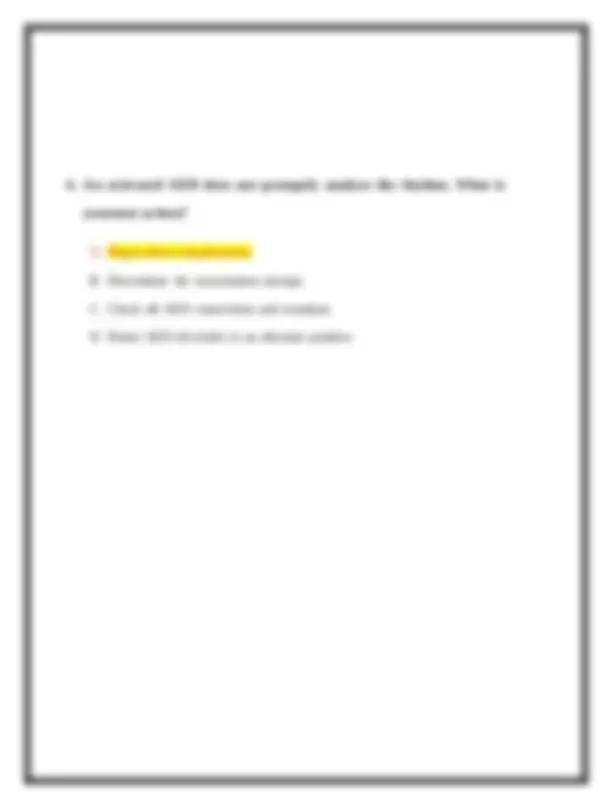

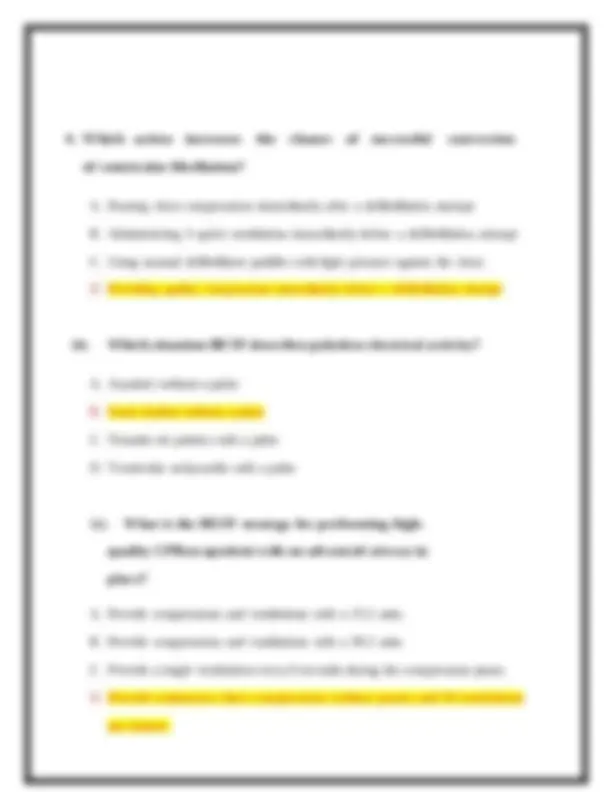
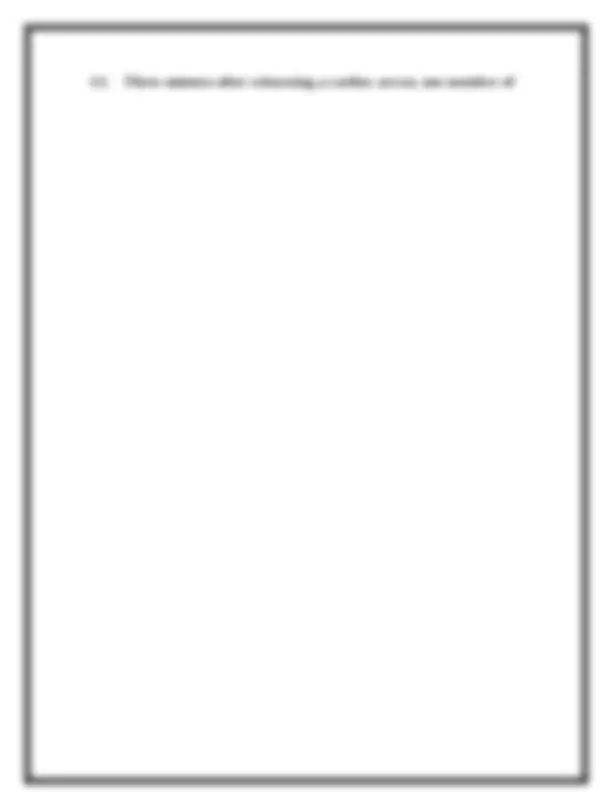
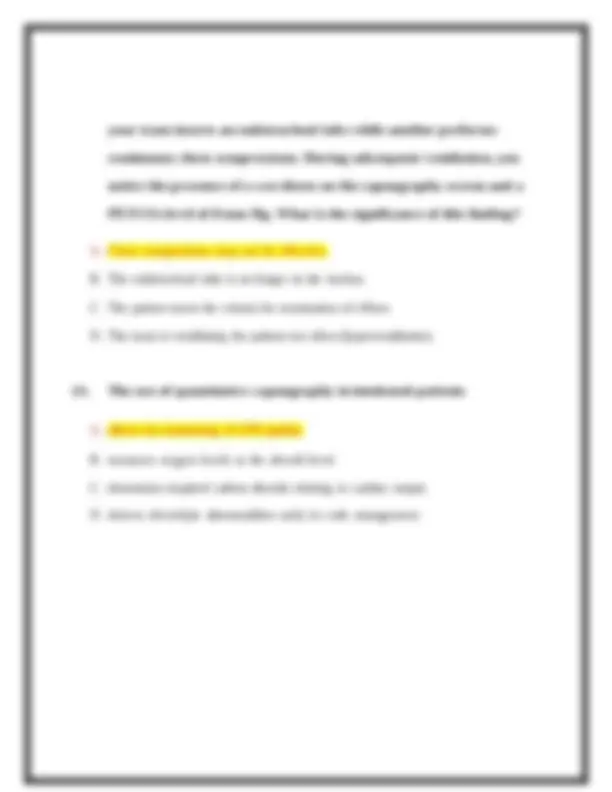
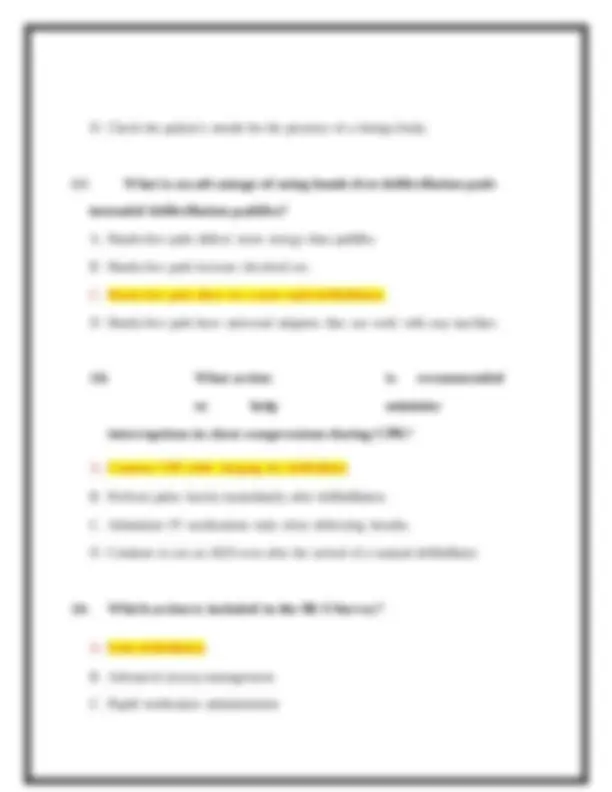
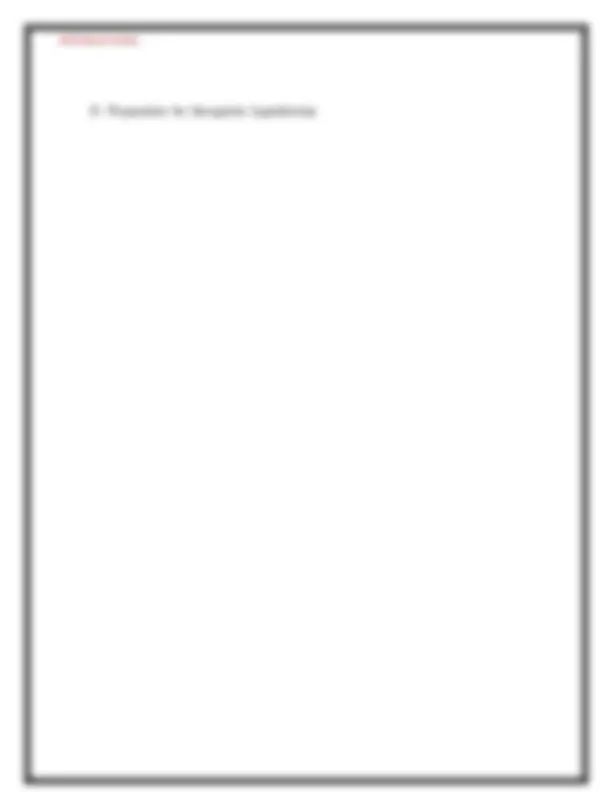
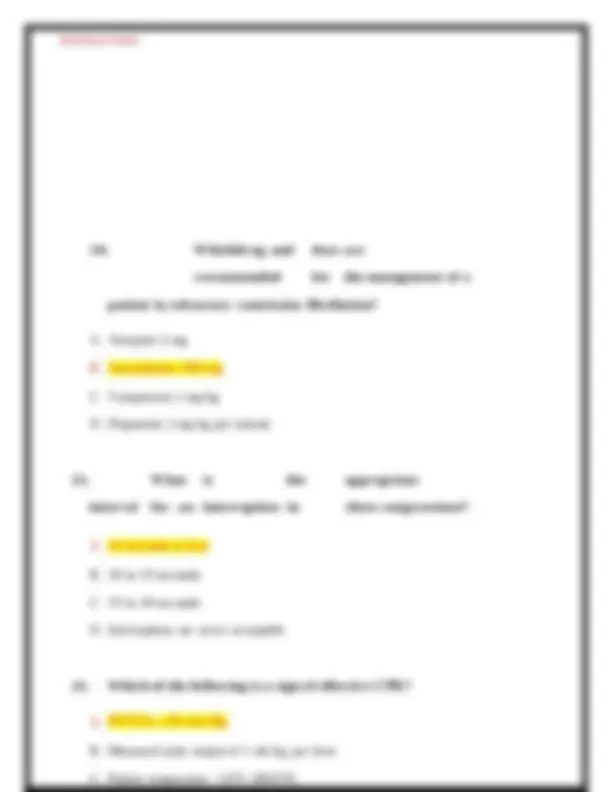
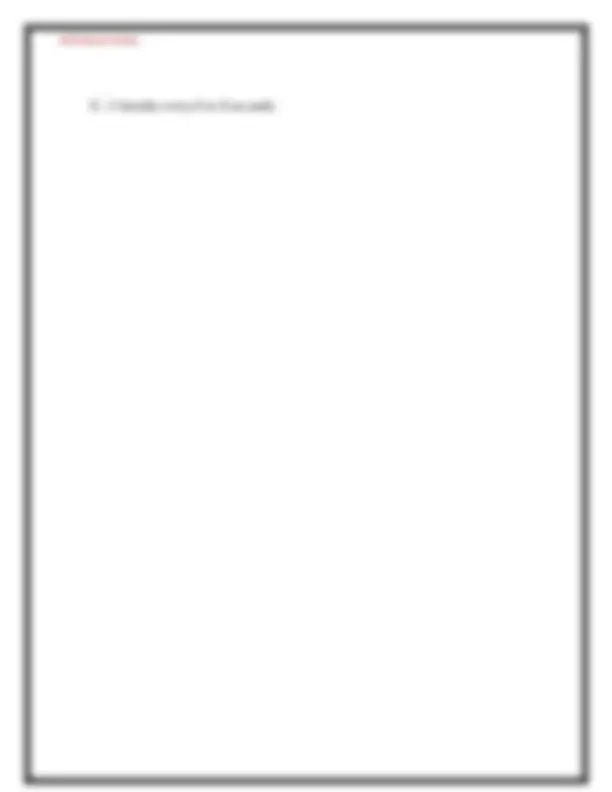
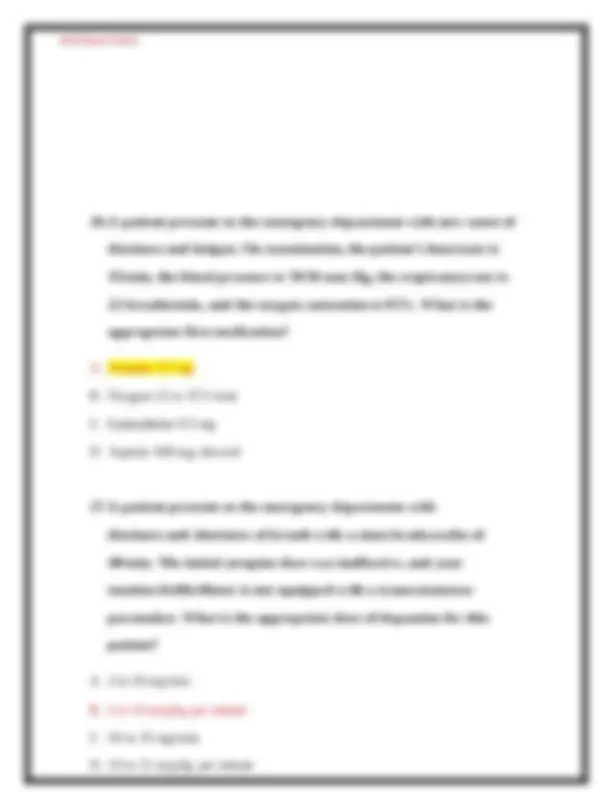
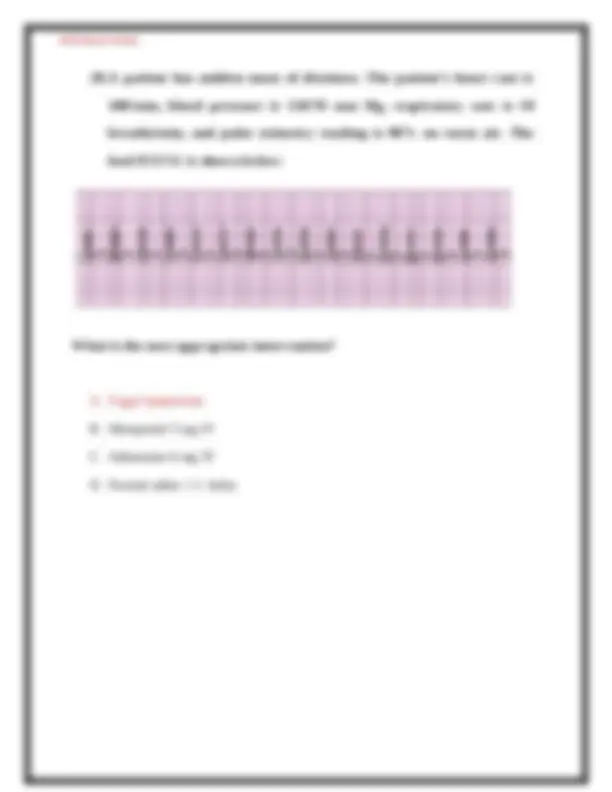

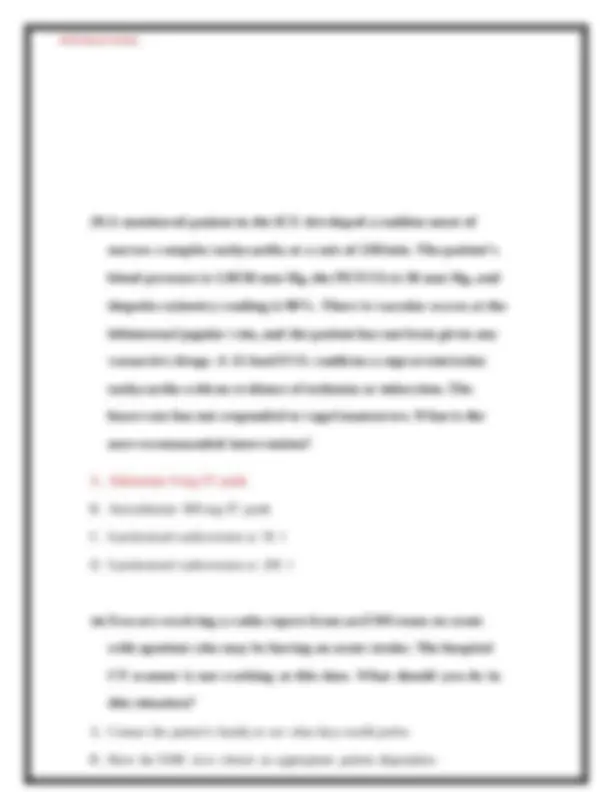
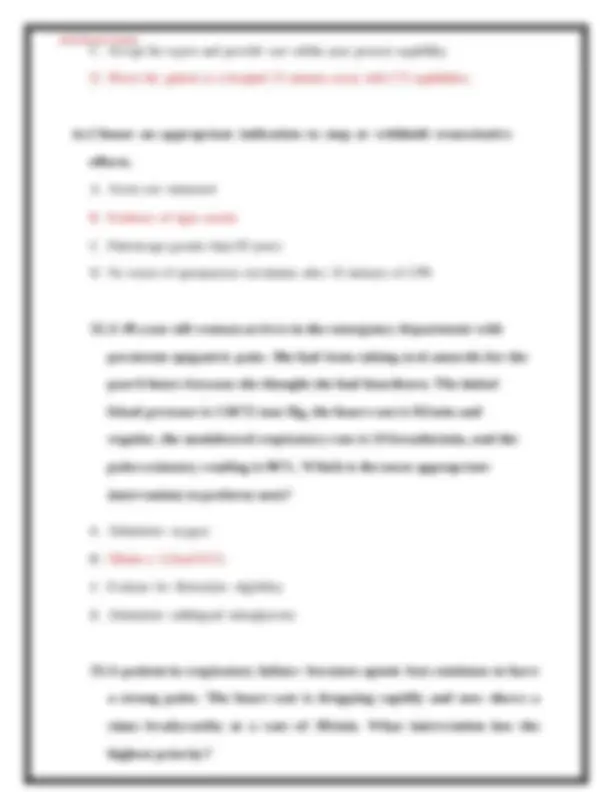
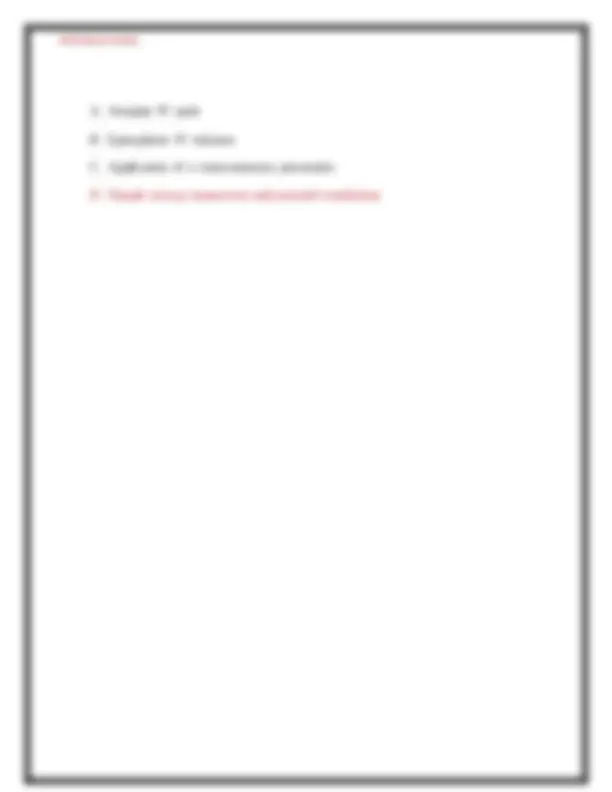
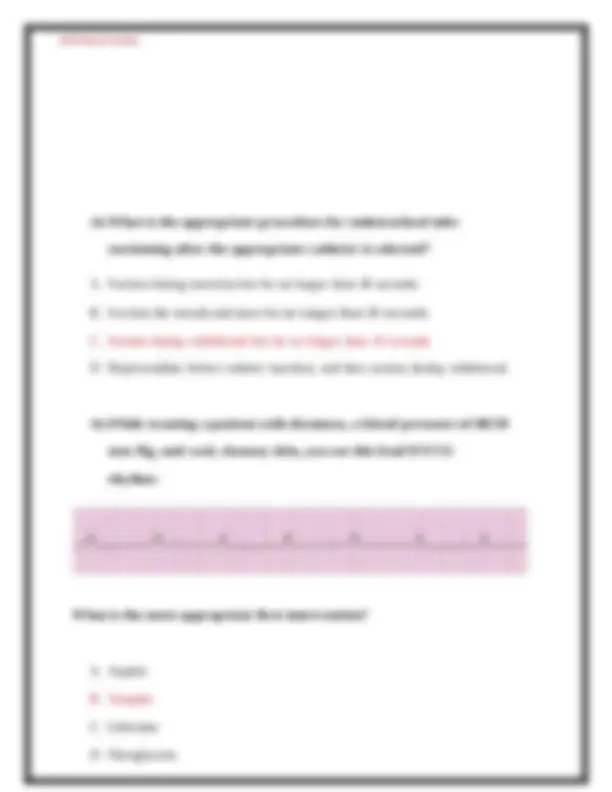
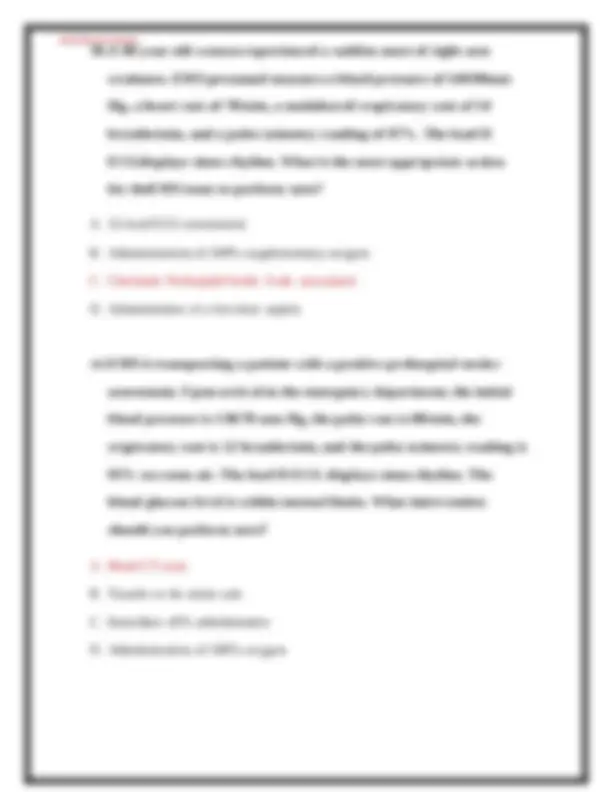

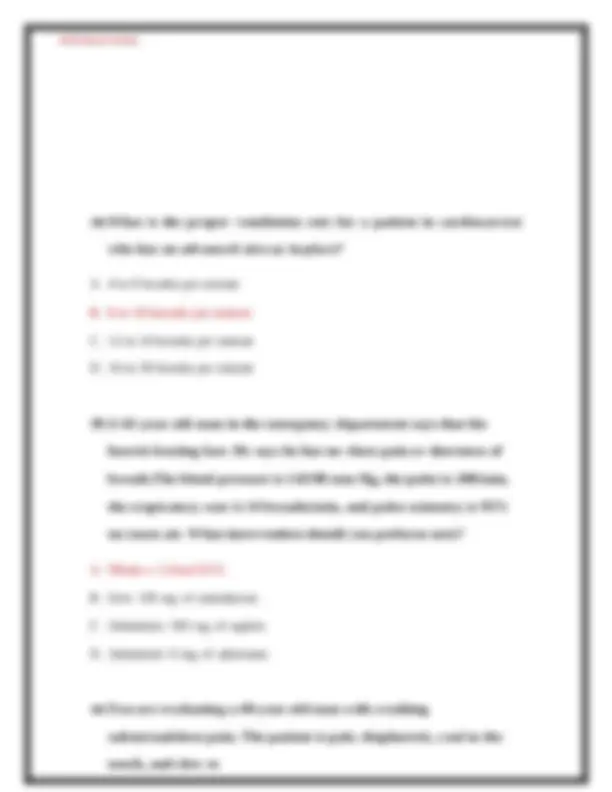
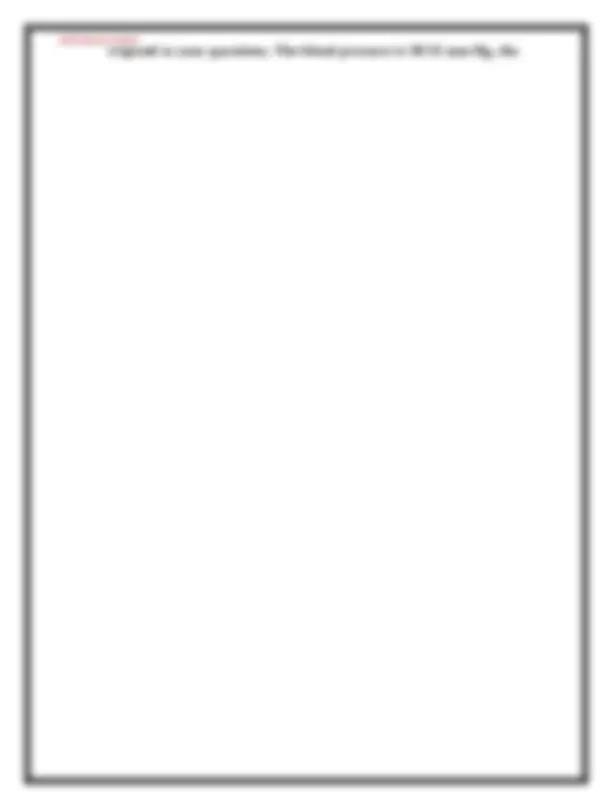
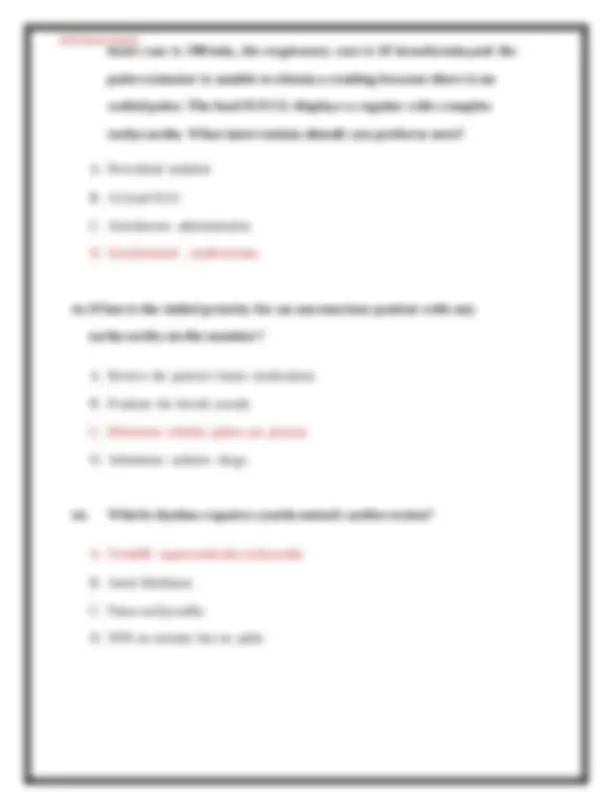
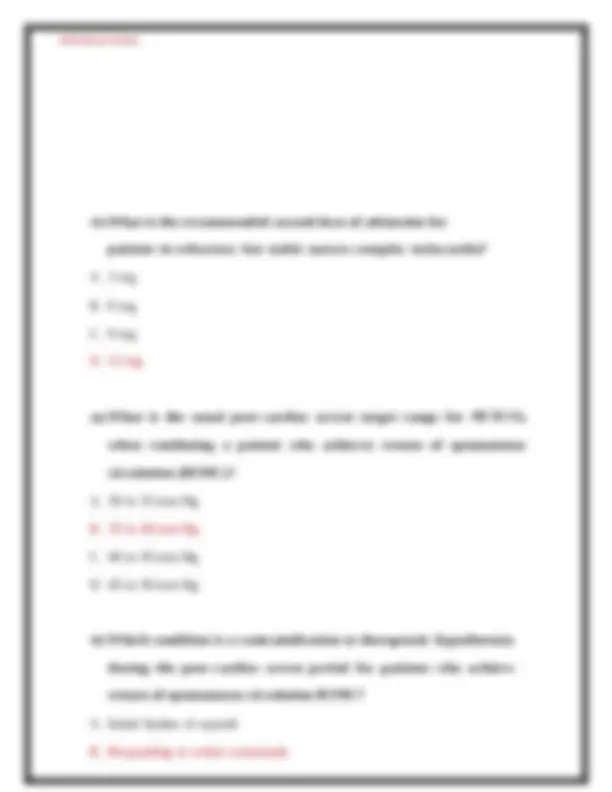
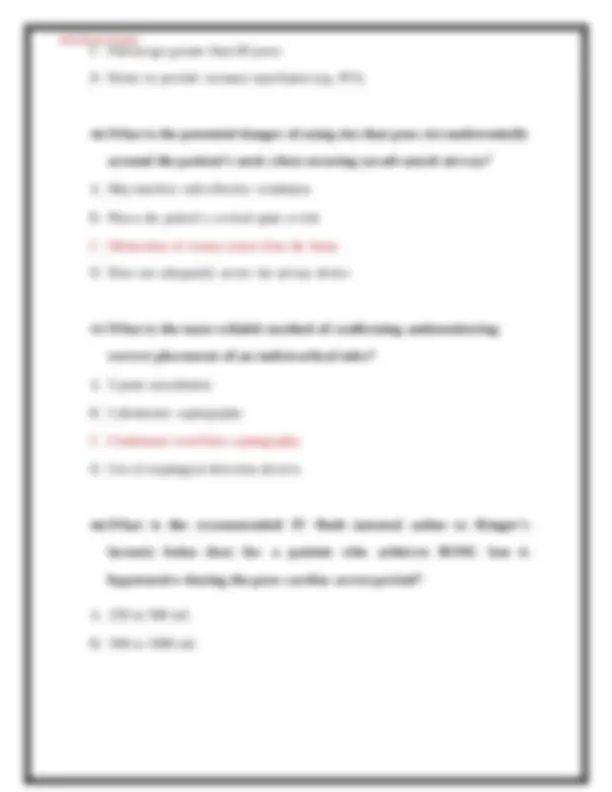
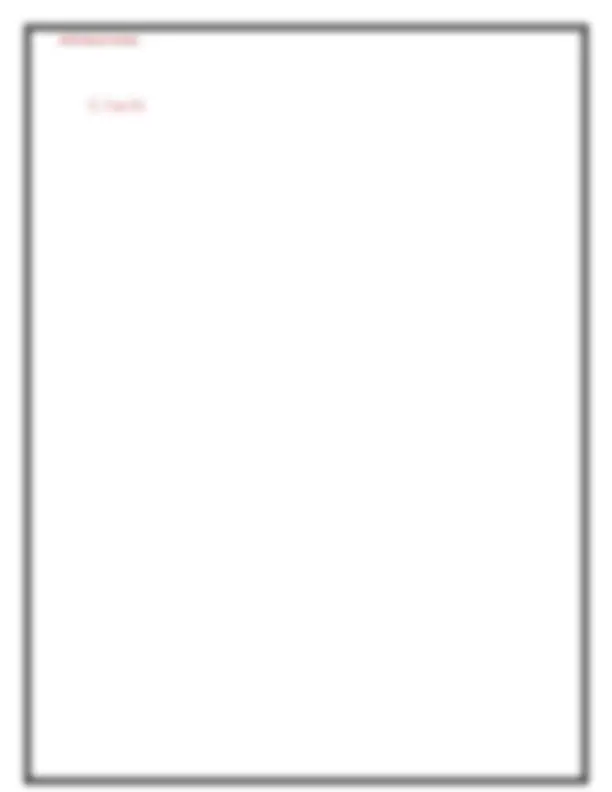
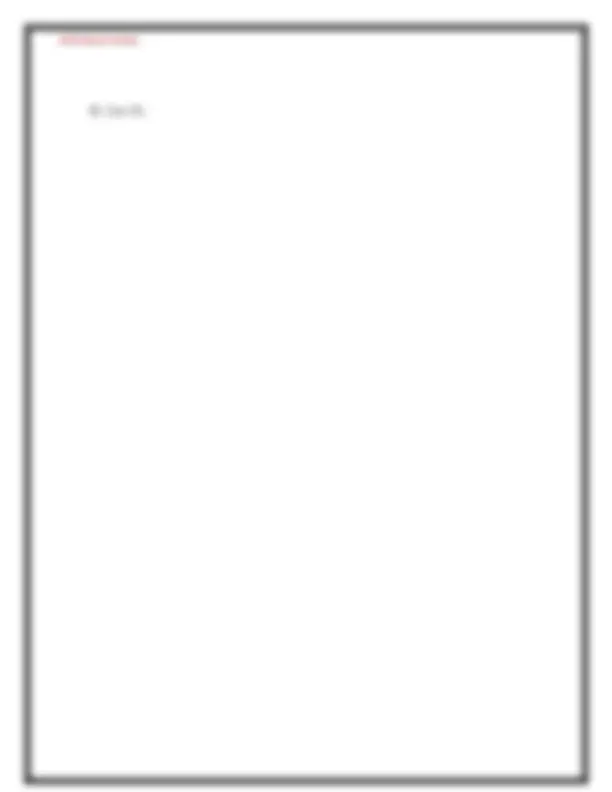

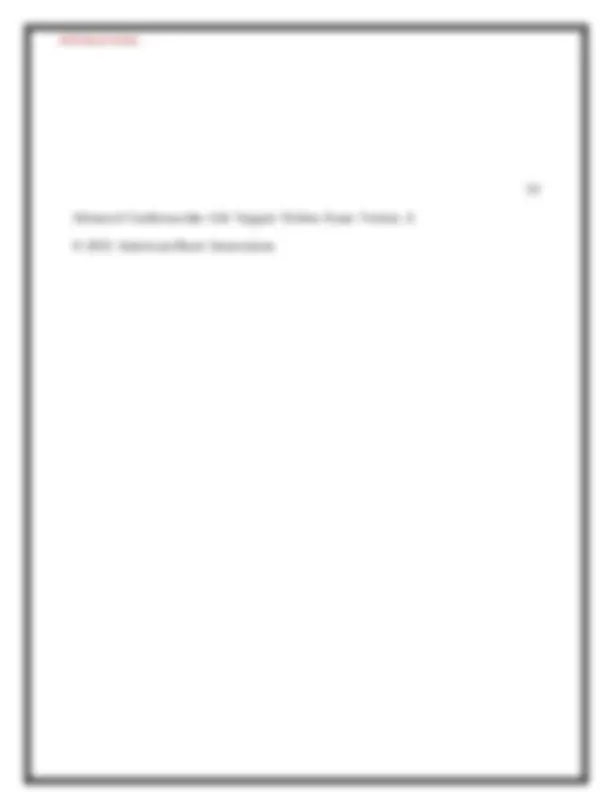


Study with the several resources on Docsity

Earn points by helping other students or get them with a premium plan


Prepare for your exams
Study with the several resources on Docsity

Earn points to download
Earn points by helping other students or get them with a premium plan
Community
Ask the community for help and clear up your study doubts
Discover the best universities in your country according to Docsity users
Free resources
Download our free guides on studying techniques, anxiety management strategies, and thesis advice from Docsity tutors
ACLS EXAM VERSION A 50 QUESTIONS WITH 100% CORRECT ANSWERS 2023-2024 UPDATE GRADED A+
Typology: Exams
1 / 36

This page cannot be seen from the preview
Don't miss anything!





























Advanced Cardiovascular Life SupportExam Version A (50 questions) Please do not mark on this exam. Record the best answer on the separate
answer sheet.
1. You find an unresponsive patient who is not breathing. After activating the emergency response system, you determine that there is no pulse. What is your next action? A. Open the airway with a head tilt–chin lift. B. Administer epinephrine at a dose of 1 mg/kg. C. Deliver 2 rescue breaths each over 1 second. D. Start chest compressions at a rate of at least 100/min. 2. You are evaluating a 58-year-old man with chest pain. The blood pressure is 92/50 mm Hg, the heart rate is 92/min, the nonlabored respiratory rate is 14 breaths/min, and the pulse oximetry reading is 97%. What assessment step is most important now? A. PETCO 2 B. Chest x-ray C. Laboratory testing D. Obtaining a 12-lead ECG
4. An activated AED does not promptly analyze the rhythm. What is yournext action? A. Begin chest compressions. B. Discontinue the resuscitation attempt. C. Check all AED connections and reanalyze. D. Rotate AED electrodes to an alternate position.
C. Resume chest compressions. D. Terminate the resuscitative effort.
7. What is a common but sometimes fatal mistake in cardiac arrest management? A. Failure to obtain vascular access B. Prolonged periods of no ventilations C. Failure to perform endotracheal intubation D. Prolonged interruptions in chest compressions 8. Which action is a component of high-quality chest compressions? A. Allowing complete chest recoil B. Chest compressions without ventilation C. 60 to 100 compressions per minute with a 15:2 ratio D. Uninterrupted compressions at a depth of 1½ inches
9. Which action increases the chance of successful conversion of ventricular fibrillation? A. Pausing chest compressions immediately after a defibrillation attempt B. Administering 4 quick ventilations immediately before a defibrillation attempt C. Using manual defibrillator paddles with light pressure against the chest D. Providing quality compressions immediately before a defibrillation attempt 10. Which situation BEST describes pulseless electrical activity? A. Asystole without a pulse B. Sinus rhythm without a pulse C. Torsades de pointes with a pulse D. Ventricular tachycardia with a pulse 11. What is the BEST strategy for performing high- quality CPRon apatient with an advanced airway in place? A. Provide compressions and ventilations with a 15:2 ratio. B. Provide compressions and ventilations with a 30:2 ratio. C. Provide a single ventilation every 6 seconds during the compression pause. D. Provide continuous chest compressions without pauses and 10 ventilations per minute.
your team inserts an endotracheal tube while another performs continuous chest compressions. During subsequent ventilation, you notice the presence of a waveform on the capnography screen and a PETCO 2 level of 8 mm Hg. What is the significance of this finding? A. Chest compressions may not be effective. B. The endotracheal tube is no longer in the trachea. C. The patient meets the criteria for termination of efforts. D. The team is ventilating the patient too often (hyperventilation).
13. The use of quantitative capnography in intubated patients A. allows for monitoring of CPR quality. B. measures oxygen levels at the alveoli level. C. determines inspired carbon dioxide relating to cardiac output. D. detects electrolyte abnormalities early in code management.
14. For the past 25 minutes, an EMS crew has attempted resuscitation of a patient who originally presented in ventricular fibrillation. After the first shock, the ECG screen displayed asystole, which has persisted despite 2 doses of epinephrine, a fluid bolus, and high-quality CPR. What is your next treatment? A. Apply a transcutaneous pacemaker. B. Administer 1 mg of intravenous atropine. C. Administer 40 units of intravenous vasopressin. D. Consider terminating resuscitative efforts after consulting medical control. 15. Which is a safe and effective practice within the defibrillation sequence? A. Stop chest compressions as you charge the defibrillator. B. Be sure oxygen is not blowing over the patient’s chest during the shock. C. Assess for the presence of a pulse immediately after the shock. D. Commandingly announce “clear” after you deliver the defibrillation shock. 16. During your assessment, your patient suddenly loses consciousness. After calling for help and determining that the patient is not breathing, you are unsure whether the patient has a pulse. What is your next action? A. Leave and get an AED. B. Begin chest compressions.
D. Check the patient’s mouth for the presence of a foreign body.
17. What is an advantage of using hands-free defibrillation pads insteadof defibrillation paddles? A. Hands-free pads deliver more energy than paddles. B. Hands-free pads increase electrical arc. C. Hands-free pads allow for a more rapid defibrillation. D. Hands-free pads have universal adaptors that can work with any machine. 18. What action is recommended to help minimize interruptions in chest compressions during CPR? A. Continue CPR while charging the defibrillator. B. Perform pulse checks immediately after defibrillation. C. Administer IV medications only when delivering breaths. D. Continue to use an AED even after the arrival of a manual defibrillator. 19. Which action is included in the BLS Survey? A. Early defibrillation B. Advanced airway management C. Rapid medication administration
ACLS Exam Version A D. Preparation for therapeutic hypothermia
ACLS Exam Version A D. Diastolic intra-arterial pressure <20 mm Hg
ACLS Exam Version A
23. What is the primary purpose of a medical emergency team(MET)or rapid response team (RRT)? A. Identifying and treating early clinical deterioration B. Rapidly intervening with patients admitted through emergency department triage C. Responding to patients during a disaster or multiple-patient situation D. Responding to patients after activation of the emergency response system 24. Which action improves the quality of chest compressions delivered during a resuscitation attempt? A. Observe ECG rhythm to determine depth of compressions. B. Do not allow the chest to fully recoil with each compression. C. Compress the upper half of the sternum at a rate of 150 compressions per minute. D. Switch providers about every 2 minutes or every 5 compression cycles. 25. What is the appropriate ventilation strategy for an adult in respiratory arrest with a pulse rate of 80/min? A. 1 breath every 3 to 4 seconds B. 1 breath every 5 to 6 seconds C. 2 breaths every 5 to 6 seconds
ACLS Exam Version A 26.A patient presents to the emergency department with new onset of dizziness and fatigue. On examination, the patient’s heartrate is 35/min, the blood pressure is 70/50 mm Hg, the respiratoryrate is 22 breaths/min, and the oxygen saturation is 95%. What is the appropriate first medication? A. Atropine 0.5 mg B. Oxygen 12 to 15 L/min C. Epinephrine 0.5 mg D. Aspirin 160 mg chewed 27.A patient presents to the emergency department with dizziness and shortness of breath with a sinus bradycardia of 40/min. The initial atropine dose was ineffective, and your monitor/defibrillator is not equipped with a transcutaneous pacemaker. What is the appropriate dose of dopamine for this patient? A. 2 to 10 mg/min B. 2 to 10 mcg/kg per minute C. 10 to 15 mg/min D. 10 to 15 mcg/kg per minute
ACLS Exam Version A 28.A patient has sudden onset of dizziness. The patient’s heart rate is 180/min, blood pressure is 110/70 mm Hg, respiratory rate is 18 breaths/min, and pulse oximetry reading is 98% on room air. The lead II ECG is shown below: What is the next appropriate intervention? A. Vagal maneuvers B. Metoprolol 5 mg IV C. Adenosine 6 mg IV D. Normal saline 1 L bolus